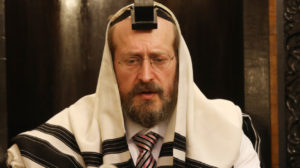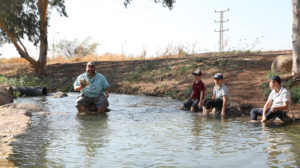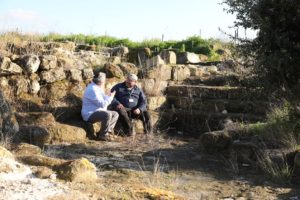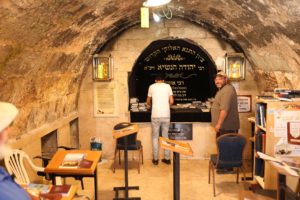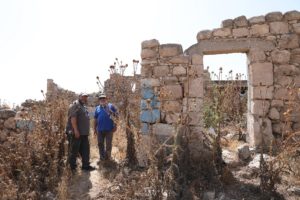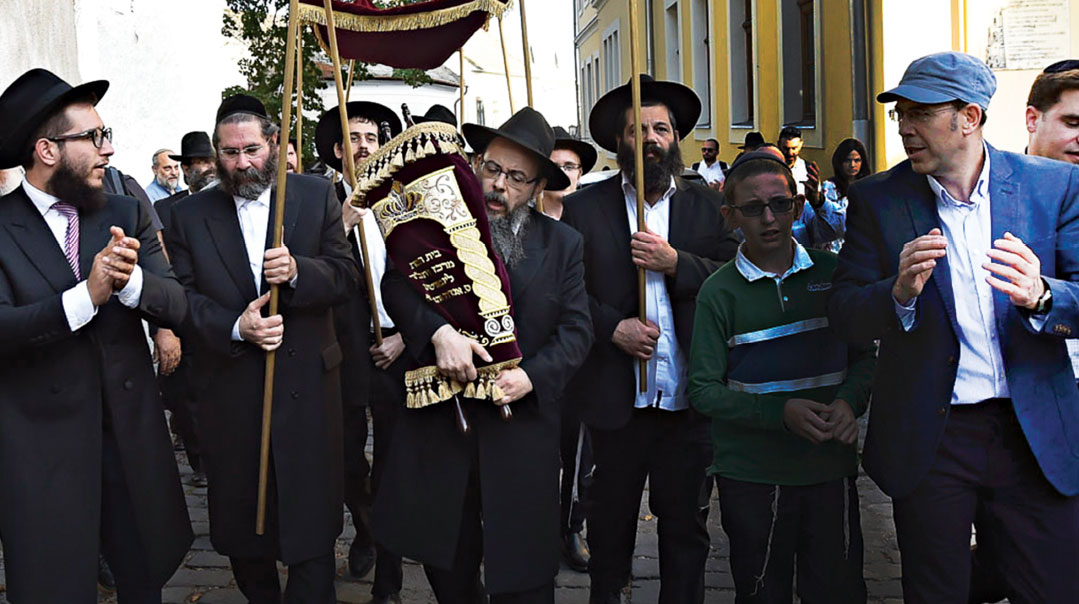Hearts to the East

The images of those long-ago prayers are indelibly ingrained in the hearts and minds of those who grew up in a different time and place

“Blessings for a green year”
Masudah Shem Tov Synagogue, Baghdad
"Baghdad was a center of Jewish life during the time I lived there,” says Morris Nissan of Jerusalem. “There were many batei knesset in Baghdad, but the Masudah Shem Tov shul, just a few steps away from our house, was considered one of the largest. There was a large open court for community gatherings, in addition to the sanctuary where we’d daven three times a day. In the last years of the Jewish community in Baghdad in the early 1950s, it also became a center for applications to make aliyah, and from where designated emigres left for the airport.”
Morris was just a little boy at the time, but he’ll never forget the power of the Yamim Noraim, when masses of people crowded together, dressed in white and wrapped in talleisim, davening in several different minyanim.
“There wasn’t room for everyone in the shul, so some had to daven outside. The davening was in the Bavli nusach, with many songs and piyutim. When the davening was finished, everyone would go outside and bless each other with the traditional words ‘santat chadara [a green year].’
“On the first day of Rosh Hashanah, we walked to the banks of the Tigris to perform Tashlich together. It was a massive gathering — I don’t think there was a single Jew in all of Baghdad who wasn’t there.”
Despite decades of war and insurgency, American aerial reconnaissance photos show the shul is still intact. Deserted, but still standing.
“My friends and I were given a mission: to guard and maintain the shuls”
Shaar HaShamayim Synagogue, Cairo
Ovadia Levi was born in Cairo in 1950, when the once-vibrant and influential Jewish community was already on the decline. About half the city’s 80,000 Jews had already emigrated, and since the establishment of the State of Israel two years before, those who remained were subject to governmental harassment — their property was confiscated and many were arrested.
Despite the hardships, Cairo still boasted a vibrant Jewish community, with 29 synagogues — all of them in use. The best-known of them was Shaar HaShamayim, which was built in 1899 and was full until the 1960s, when the community disbanded.
Shaar HaShamayim was magnificent by any standard, says Levi. It contained several different halls and held over 1,000 people during the Yamim Noraim. Its walls and bimah were faced with white marble, the bimah surrounded by a fence of menorahs, and in the center of the sanctuary, opposite a larger menorah, was a three-story aron kodesh made of intricately carved wood. Before the aron were three couches covered in red velvet where the chief rabbi sat alongside the president of the community and guests of honor.
Following the Sinai Campaign of 1956, many more Jews escaped to Israel due to heightened persecution, and by 1967, only about 2,500 remained — Ovadia Levi’s family included. During the Six Day War, all men in the community over 18 were arrested (they were released and expelled from the country three years later), and Ovadia, who was then still 17, was given the post of keeper of the shul’s keys, becoming responsible for all the shul’s property.
“All the shuls were closed by then,” he says, “and there were no tefillot held. But I and my friends were given the important mission of guarding and maintaining them. When we could, we would go in and clean up a bit.”
Since then, Shaar HaShamayim has been the one active shul in Cairo, whose community today contains less than a minyan, mostly elderly women. The 800-year-old Ben Ezra Synagogue has been restored and serves as tourist attraction, but the only functioning shul is Shaar HaShamayim, which is maintained by the Israeli diplomatic staff.
(Excerpted from Mishpacha, Issue 780)
Oops! We could not locate your form.

